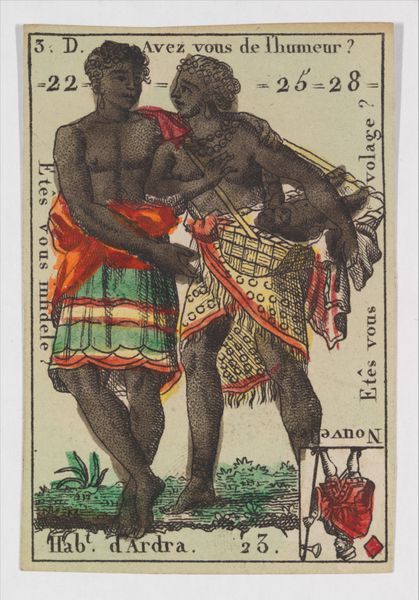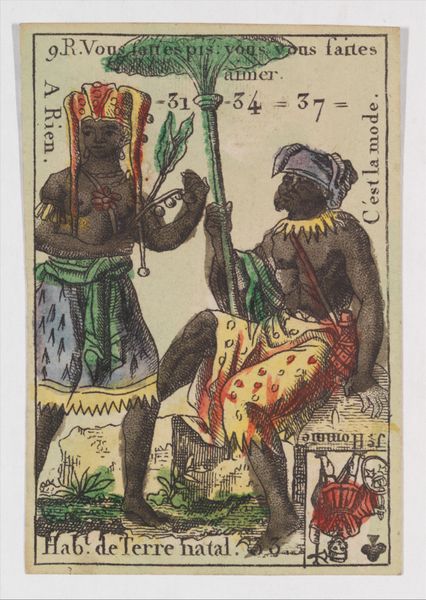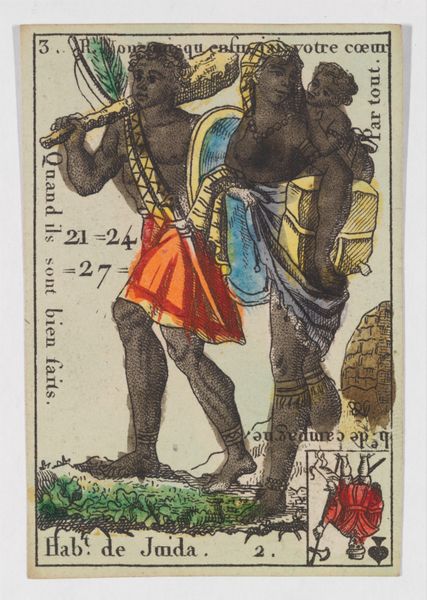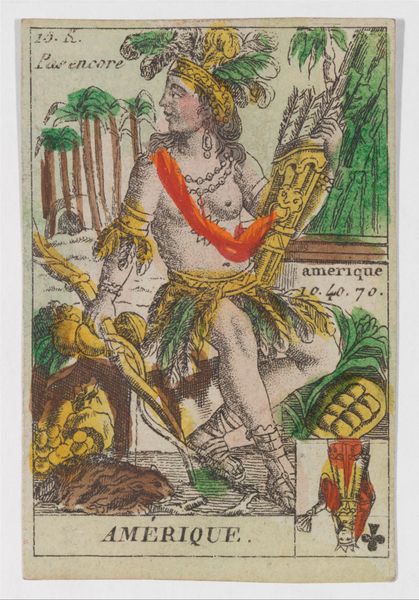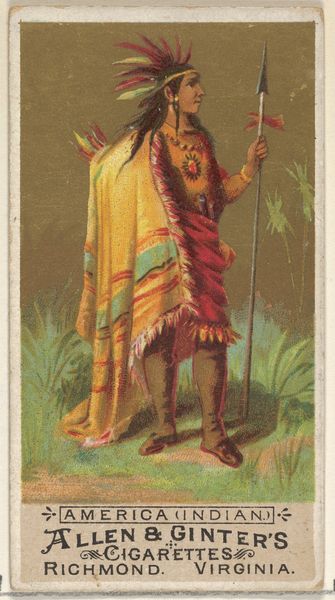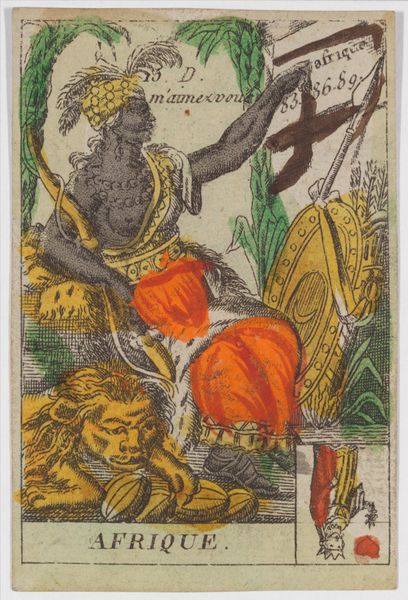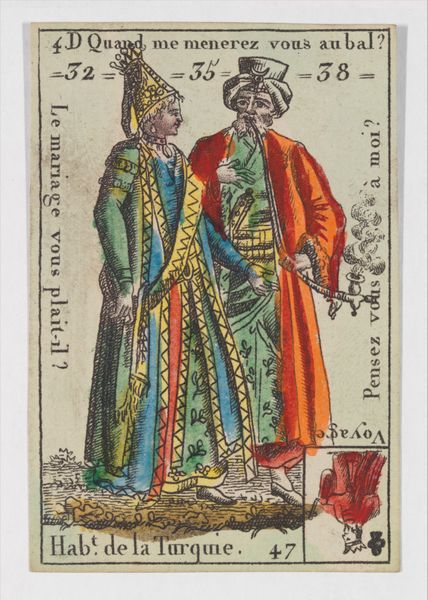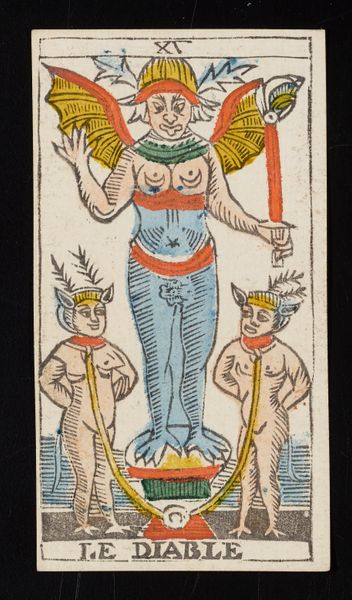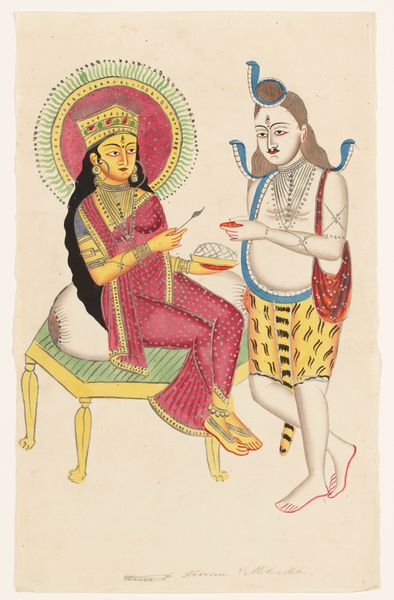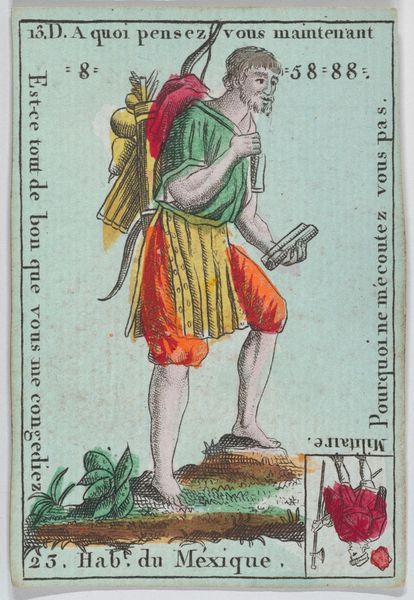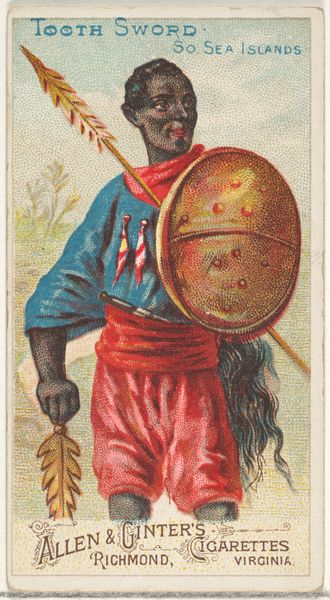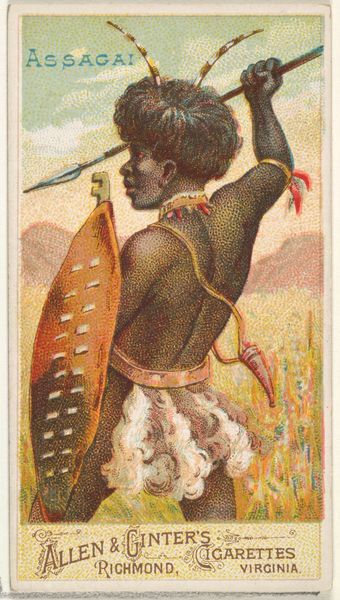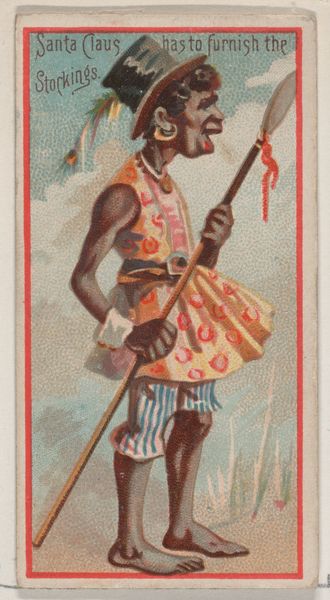
Hab.t de Loango, from the playing cards (for quartets) "Costumes des Peuples Étrangers" 18th century
0:00
0:00
drawing, coloured-pencil, print, etching
#
african-art
#
drawing
#
coloured-pencil
# print
#
etching
#
figuration
#
coloured pencil
#
naive art
#
costume
#
genre-painting
Dimensions: 3 3/16 × 2 1/16 in. (8.1 × 5.3 cm)
Copyright: Public Domain
Curator: This small printed card from the 18th century offers a glimpse into how Europeans viewed other cultures. It's called "Hab.t de Loango, from the playing cards (for quartets) 'Costumes des Peuples Étrangers'" and resides here at the Met. Editor: Wow, there's something immediately disarming about it. Like stumbling into a brightly colored dream seen through someone else’s, perhaps limited, understanding of the world. Naive yet with its peculiar charm, you could say? Curator: Precisely. The figures depicted represent people from Loango, a historical kingdom in what is now the Republic of Congo. Note how the artist meticulously detailed their attire using etching and coloured pencil, a clear effort to document 'exotic' customs. Editor: The colors do pop, don’t they? Those bold oranges and blues in their skirts! And yet, there’s a slight unease simmering beneath that bright surface. The composition feels stiff. And is that text just floating there above their heads? It gives off a rather judgmental feel. Curator: That unease, I believe, comes from the context in which this image was created. It's part of a series intended to illustrate 'foreign peoples,' often exoticizing and othering non-European cultures. The text snippets surrounding the image contribute to this, turning the figures into objects of curiosity rather than individuals. It echoes colonialism's impact on how we see other people. Editor: Absolutely. It becomes a lens into Europe’s gaze outward, distorting as much as it reveals, which brings up questions of representation. It's interesting how what was conceived as an attempt to portray different cultures has now turned into evidence of that era’s own assumptions. It feels almost ironic. Curator: That irony is why this seemingly simple playing card becomes such a compelling historical document. It invites us to question not just what we see, but who is doing the seeing and why. Editor: Indeed. It's a tiny portal to understanding the historical power dynamics behind even the most seemingly harmless images. I walk away looking not at Loango so much, but at France in the 1700s.
Comments
No comments
Be the first to comment and join the conversation on the ultimate creative platform.
